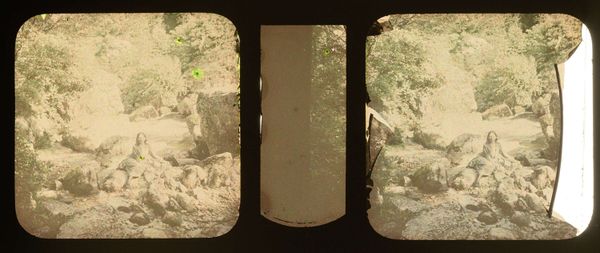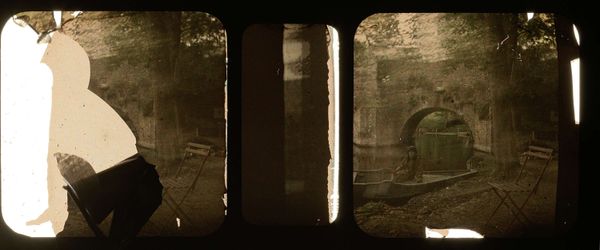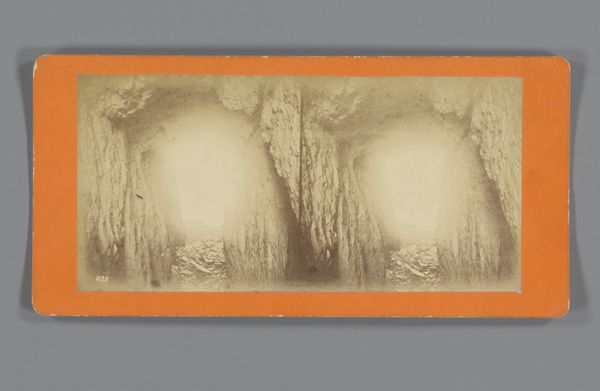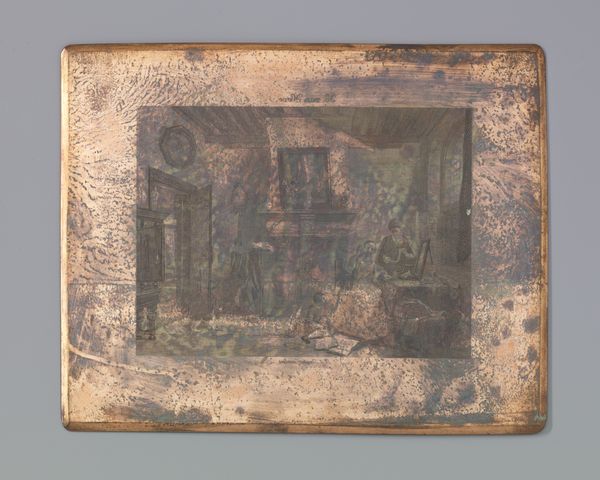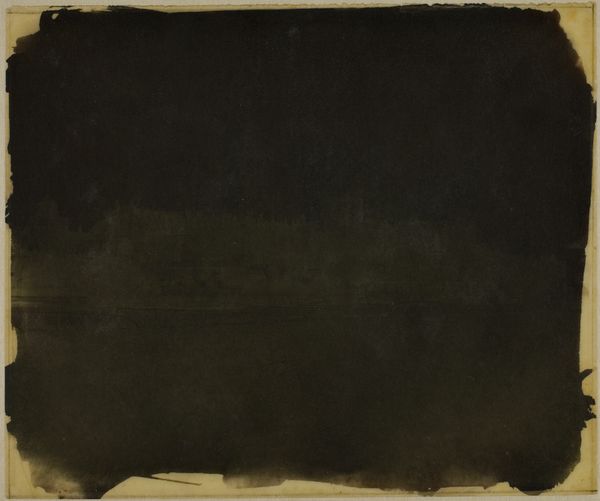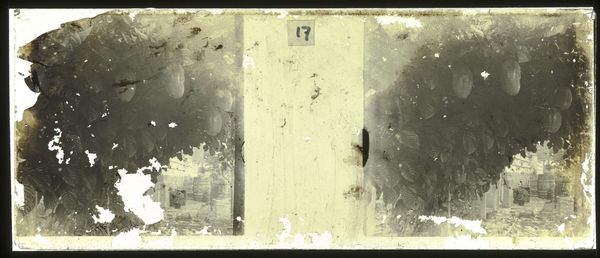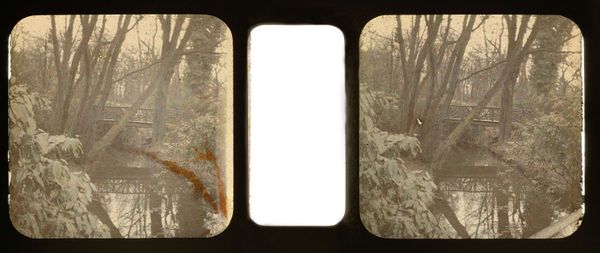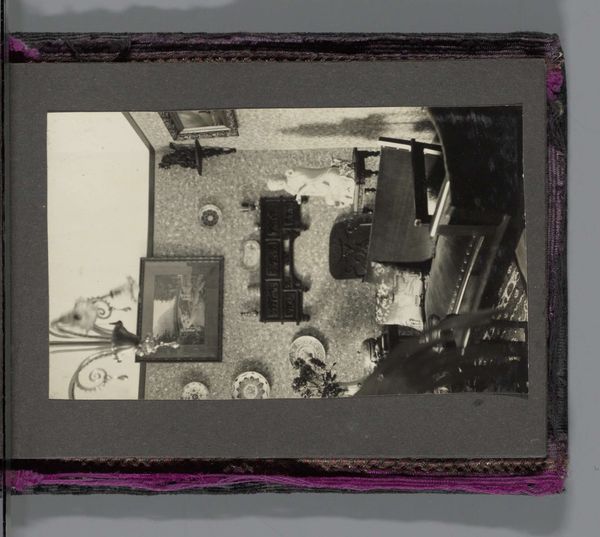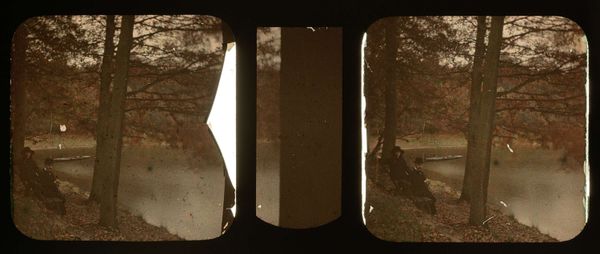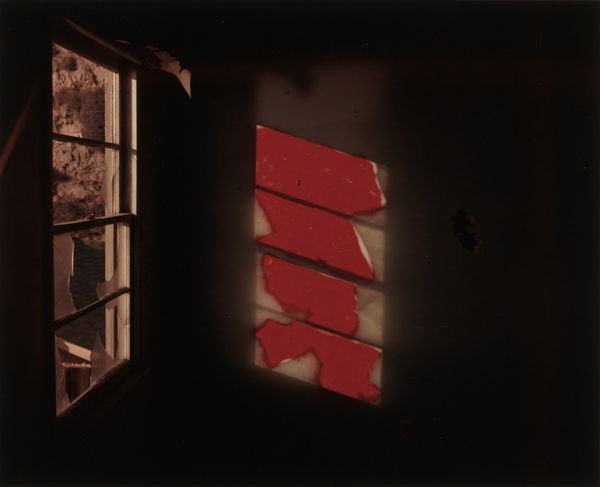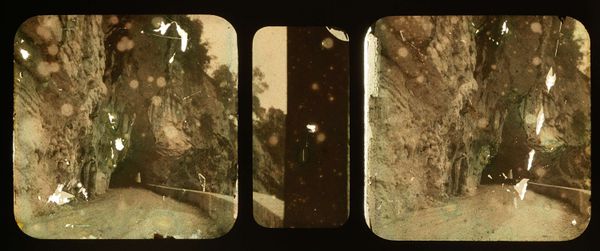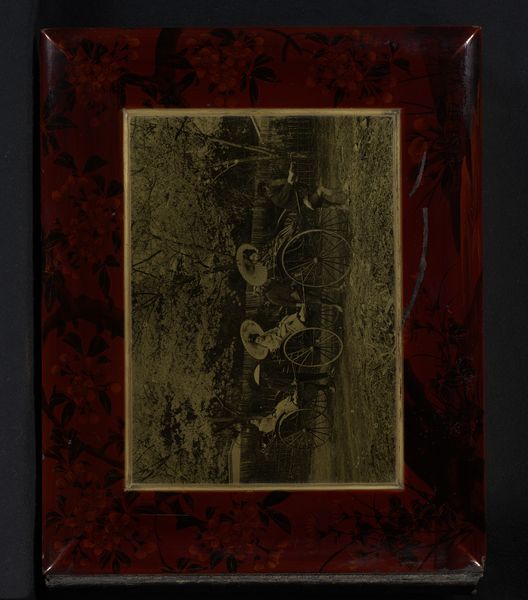
#
muted dark tone
#
sculpture
#
muted light
#
derelict
#
dark-toned
#
unrealistic statue
#
carved into stone
#
dark silhouette
#
muted colour
#
shadow overcast
Dimensions: height 75 mm, width 150 mm
Copyright: Rijks Museum: Open Domain
Curator: This artwork, entitled "Man en vrouw op de trap voor een landhuis," whose English translation is "Man and woman on the steps in front of a country house," by Adolphe Burdet, and dating from the period 1907 to 1935, presents a rather intriguing tableau. What's your initial read? Editor: There's an almost theatrical stillness to it, a hushed, melancholic atmosphere evoked by the muted tones. It feels like a stage set after the play is over. What's drawing my eye, initially, is the foreground sculpture's prominent positioning relative to the house itself. Curator: Interesting observation. From a materialist perspective, note how the surface and age are captured by the process itself; light and shadow become almost tangible textures that imply both presence and transience. The artist uses what's visible to suggest what's changed, degraded, what's been worked on, aged, exposed, discarded. How do we place such work in a historical, societal, cultural view? Editor: Well, for me, the positioning of this 'man and woman' evokes a broader historical and gendered discourse about domesticity, leisure, and even privilege during that period. I immediately think of class and gender norms shaping identities—who gets to stand on those steps, symbolically and literally? The country house functions as an immediate stand-in for bourgeois notions of success, aspiration. But I find the sculpture more intriguing—it’s crumbling. Curator: Agreed, it has a very strong symbolic presence as a decaying effigy of a couple. Thinking of labour, however, do you think the artist or maker meant it to erode as such or is this decay purely related to its consumption or ownership? Editor: That tension between intention and outcome is absolutely crucial. The artist certainly controlled their medium, yet their intended legacy becomes subject to weather, environment. Its presence, in itself, raises pressing concerns for environmental ethics and conservation policies. In a broader way, it even begs the questions 'who gets to determine history and through whose lens?' Curator: Very pertinent thoughts that link history to its very own means of production. This helps ground such works within real societal processes that often get erased when thinking only of 'the artistic vision' of a great name. Editor: Exactly. Thinking of this interplay of material presence and sociopolitical absence is essential. Curator: Indeed. An evocative glimpse into a specific moment framed through enduring questions. Editor: Leaving us, appropriately, with much to ponder beyond what's immediately visible.
Comments
No comments
Be the first to comment and join the conversation on the ultimate creative platform.


